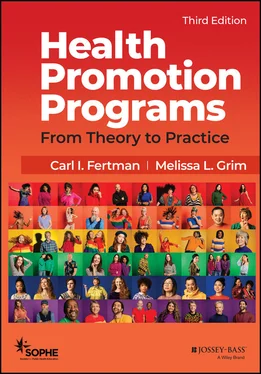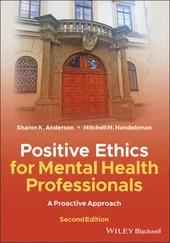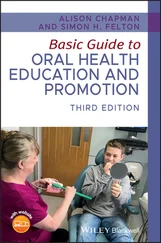(SOPHE) Society for Public Health Education - Health Promotion Programs
Здесь есть возможность читать онлайн «(SOPHE) Society for Public Health Education - Health Promotion Programs» — ознакомительный отрывок электронной книги совершенно бесплатно, а после прочтения отрывка купить полную версию. В некоторых случаях можно слушать аудио, скачать через торрент в формате fb2 и присутствует краткое содержание. Жанр: unrecognised, на английском языке. Описание произведения, (предисловие) а так же отзывы посетителей доступны на портале библиотеки ЛибКат.
- Название:Health Promotion Programs
- Автор:
- Жанр:
- Год:неизвестен
- ISBN:нет данных
- Рейтинг книги:5 / 5. Голосов: 1
-
Избранное:Добавить в избранное
- Отзывы:
-
Ваша оценка:
- 100
- 1
- 2
- 3
- 4
- 5
Health Promotion Programs: краткое содержание, описание и аннотация
Предлагаем к чтению аннотацию, описание, краткое содержание или предисловие (зависит от того, что написал сам автор книги «Health Promotion Programs»). Если вы не нашли необходимую информацию о книге — напишите в комментариях, мы постараемся отыскать её.
Health Promotion Programs: From Theory to Practice
Health Promotion Programs: From Theory to Practice
Health Promotion Programs — читать онлайн ознакомительный отрывок
Ниже представлен текст книги, разбитый по страницам. Система сохранения места последней прочитанной страницы, позволяет с удобством читать онлайн бесплатно книгу «Health Promotion Programs», без необходимости каждый раз заново искать на чём Вы остановились. Поставьте закладку, и сможете в любой момент перейти на страницу, на которой закончили чтение.
Интервал:
Закладка:
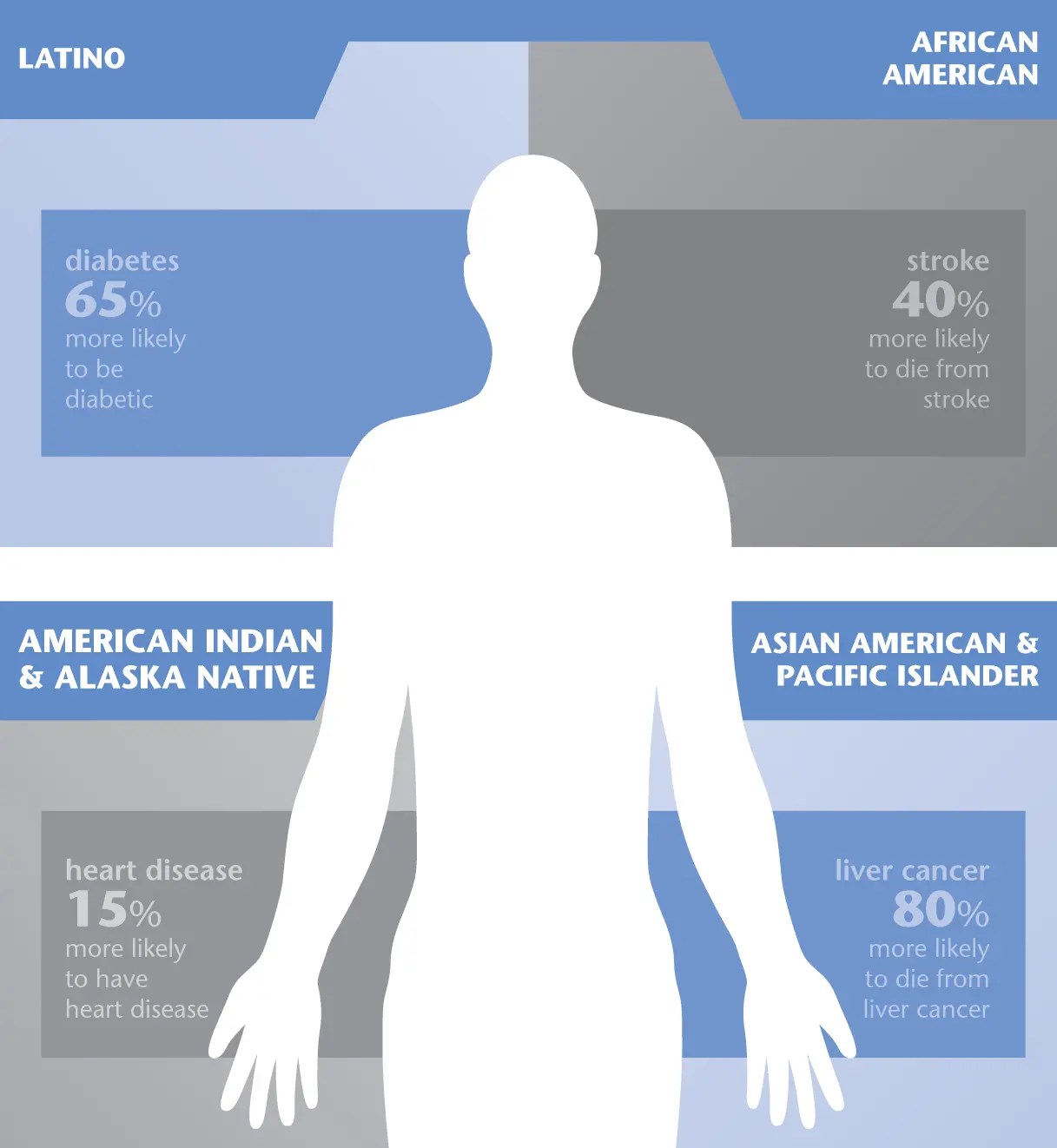
Figure 2.4 Racial and Ethnic Health Disparities among Communities of Color Compared to Non-Hispanic Whites
Source : Our nation’s health depends on fixing persistent health disparities, by Families USA, 2014. © 2014, Families USA.
Education
A persistent inequity in the United States is the gap between minority and White students, which has been proven to be difficult to close. Prevalent ethnic and racial inequities in education follow a pattern in which African Americans, American Indians, and Latinos systematically underperform academically, compared to Caucasians and Asian Americans. Educational inequities are evident in markers of low academic performance and graduation rates. In 2016–17, the Adjusted Cohort Graduation Rates (ACGRs) for minority public high school students were below the United States average of 85 percent: American Indian/Alaska Native 72 percent, Black 78 percent, and Hispanic 80 percent (National Center for Education Statistics, 2018).See Figure 2.5.
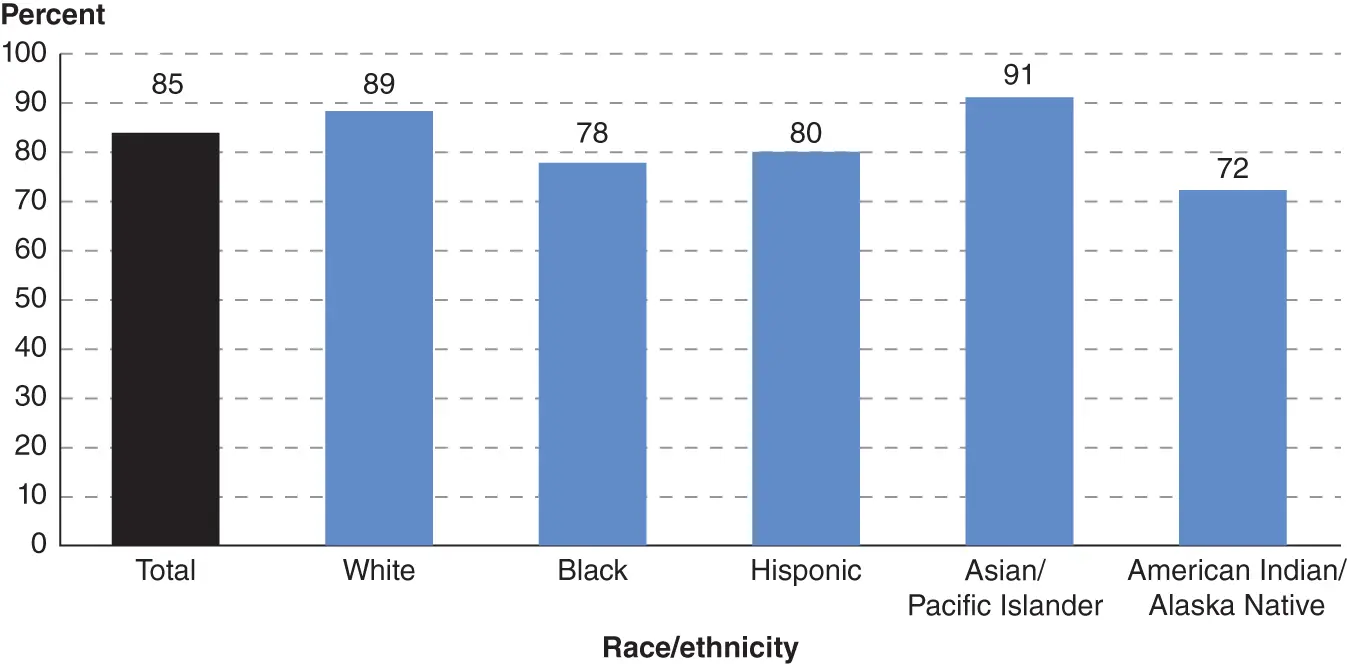
Figure 2.5 Adjusted Cohort Graduation Rate (ACGR) for Public High School Students, by Race/Ethnicity: 2016–17
Source : Public High School Graduation Rates, U.S. Department of Education, 2018.
An overarching goal of Healthy People 2030 is to “eliminate health disparities, achieve health equity, and attain health literacy to improve the health and well-being of all.” Low education and income levels are associated with health illiteracy, which has been identified as a critical factor contributing to health inequities (Paasche-Orlow & Wolf, 2010), and national data confirm that health inequities are exacerbated by the prevalence and severity of limited health literacy. Health literacy is generally referred to as the ability to apply literacy skills to health situations at home, work, and the community.
Aging Process
The pace of population aging is much faster than in the past. Between 2015 and 2050, the proportion of the world’s population over 60 years will nearly double from 12 percent to 22 percent. Currently, the number of people aged 60 years and older is outnumbering children younger than five years. All countries face major challenges to ensure that their health and social systems are ready to make the most of this demographic shift. According to the World Health Organization, by 2050, the world’s population aged 60 years and older is expected to total 2 billion, up from 900 million in 2015 (World Health Organization, 2018). Health generally deteriorates with age, but there is significant variation across people, regions, and countries.
Life expectancy at birth compares the average number of years to be lived by a group of people born in the same year, if mortality at each age remains constant in the future. Life expectancy at birth is also a measure of overall quality of life in a country and summarizes the mortality at all ages. Increased life expectancy constitutes a considerable public health accomplishment, and for the first time in history, most people can expect today to live into their sixties and beyond. Living longer brings exciting opportunities not only for those who enjoy aging, but also for our society as a whole. Extended years of productive and active life mean additional contributions to family and community. However, these extended benefits greatly rely on two key factors: health and quality of life.
Women’s and Men’s Health
While the overall health of American women has improved over the past few decades, significant disparities still exist. Many minority women continue to lag behind White women in access to care and quality of care, which is affecting health outcomes. Certain policy decisions have a high impact on women’s health. For instance, while there is good evidence that comprehensive sex education programs are effective in reducing abortion and poverty, and empowering women, federal support for these programs has vanished. Meanwhile, the United Nations and international health agencies have declared that accurate STD, HIV/AIDS, and other related information should be regarded as a basic human right.
Cultural, social, and structural factors also play a role in health differences between men and women. For instance, 1 in 3 women have experienced sexual violence, physical violence, and/or stalking by an intimate partner in their lifetime. Similarly, women earn less than men: full-time female workers earn about one-fourth less than male counterparts in a given year. This contributes to higher rates of poverty among women compared to men, which in turn affects health and quality of life. There are also differences in the way women and men seek and receive healthcare services. These differences are in part due to how different people access the healthcare system and the provision of services. For example, women tend to use preventive and diagnostic services more frequently, whereas men make greater use of emergency service.
Gender Identity and Sexual Orientation
According to a Gallup report, the percentage of American adults identifying as lesbian, gay, bisexual, transgender, or queer (LGBTQ+) increased to 4.5 percent in 2017, up from 4.1 percent in 2016 and 3.5 percent in 2012 (Newport, 2020). Research suggests that LGBTQ+ persons face health inequities linked to societal stigma, discrimination, and denial of their civil and human rights. Discrimination against LGBTQ+ persons has been associated with high rates of psychiatric disorders, substance abuse, and suicide. Experiences of violence and victimization are frequent for LGBTQ+ persons, and have long-lasting effects on the individuals and the community. Personal, family, and social acceptance of gender identity affects the mental health and personal safety of LGBTQ+ individuals. There is evidence that:
LGBTQ+ youth are 2 to 3 times more likely to attempt suicide.
LGBTQ+ youth are more likely to be homeless.
Lesbians are less likely to get preventive services for cancer.
Gay men are at higher risk of HIV and other STDs, especially among communities of color.
Lesbians and bisexual females are more likely to be overweight or obese.
Transgender individuals have a high prevalence of HIV/STDs, victimization, mental health issues, and suicide and are less likely to have health insurance than heterosexual or LGBTQ+ individuals.
Elderly LGBTQ+ individuals face additional barriers to health because of isolation and a lack of social services and culturally competent providers.
LGBTQ+ populations have the highest rates of tobacco, alcohol, and other drug use.
Disability
One in four adults—61 million Americans—have a disability that impacts major life activities (Okoro et al., 2018). Disability is more common among women, non-Hispanic American Indians/Alaska Natives, adults with lower income and adults in rural areas. Mobility and cognition disability are the two most common disability types, followed by independent living, hearing, vision, and self-care; disability and income are directly associated.
In general, people with disabilities are more likely to report anxiety, pain, sleeplessness, and depression (Aro et al., 2019). Health professionals may need to make additional efforts to reach out to this population group, as people with disabilities are more likely to have behavioral health risks such as obesity, smoking, and being physically inactive, all of which can lead to poorer health and premature death. Adults with any disability were more likely to die of any cause compared to adults without any disability. Women with disabilities and those who are minorities experience additional social and environmental barriers that make them more vulnerable to certain health conditions. For instance, disabled women are more likely to suffer from pain, fatigue, osteoporosis, obesity, and depression. Disabled minorities are often said to be in double jeopardy because they have two characteristics: being disabled and being from a minority group that place them at greater risk for health disparities (Jones & Sinclair, 2008).
Читать дальшеИнтервал:
Закладка:
Похожие книги на «Health Promotion Programs»
Представляем Вашему вниманию похожие книги на «Health Promotion Programs» списком для выбора. Мы отобрали схожую по названию и смыслу литературу в надежде предоставить читателям больше вариантов отыскать новые, интересные, ещё непрочитанные произведения.
Обсуждение, отзывы о книге «Health Promotion Programs» и просто собственные мнения читателей. Оставьте ваши комментарии, напишите, что Вы думаете о произведении, его смысле или главных героях. Укажите что конкретно понравилось, а что нет, и почему Вы так считаете.
